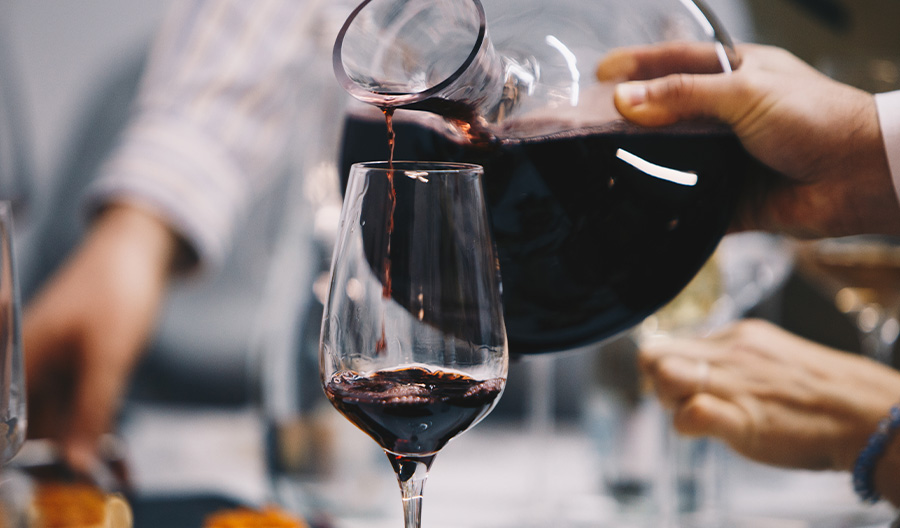Though wrapped in an aura of luxury and flashes of fine crystal, the process of decanting wine is really a very basic technique that can enhance the enjoyment of almost every bottle.
What Is Double Decanting?
“We decant a lot at the restaurant,” explains Tristan Pitre, the wine director at San Ysidro Ranch in Montecito, California. “People who eat here tend to be drinking the wine right away, and both the whites and red wines benefit from that extra air.”
“We definitely decant an older wine, but it’s to pull it off the sediment more than anything,” says Pitre. “There are very few things that we are not open to decanting.” (Natural-leaning reds are one category that can get more mousey with more air, for instance.)
Double decanting takes the process up another notch. That’s when the wine is aerated and taken off the sediment by pouring into an initial vessel, then is returned the original bottle, which, at least in restaurants, is usually rinsed of sediment.
While you can use any decanter for this process, there are special products that make it easier, like the Recanter, which attaches to a wine bottle with a drip-proof silicone seal.
“Double decanting for me is about making sure the wine is served in the best way for the guests, letting the wine be able to breathe while keeping the actual bottle presentation intact,” says Travis Padilla, who currently works at Il Buco in Manhattan and double-decants more than 100, mostly larger format wines each year during La Festa de Barolo.
He first learned of decanting from Yannick Benjamin at Contento in East Harlem and Paul Grieco at Terroir in Tribeca. “For me, it’s just another way to be more personal with the guest and build on the story of the wine,” he says.
Pitre agreed, even though he doesn’t often take the extra step of double decanting at San Ysidro Ranch, unless a guest is staying multiple days and picks their wine from the cellar in advance.
“You open up the wine, it gets some air, and then goes back into the bottle and is poured from the bottle,” he said. “Guests like to see that.”

When to Double Decant
During previous jobs in Minneapolis at Demi and Spoon & Sable, Pitre found double decanting critical when serving tasting menus with wine pairings.
“There, you have three ounces per person, and there is not the experience of watching it open up or change,” he says, as compared to letting a wine blossom over time in the bottle or even in just the first decanter. “It needs to be good right away. In those situations, we are double-decanting almost every red wine.”
Padilla also uses double-decanting as a way to introduce a little bit of air but then slow it down, which can be important for older wines that may lose their pleasures with too much air.
“If it’s not for presentation, I tend to focus double decanting on older wines that maybe haven’t gone over the hill yet, but are at the top of the hill with extremely tertiary flavors,” he says. “Putting that in the actual decanter speeds up the aeration a lot more than I personally like. I feel like those wines need slower aeration.” That’s where the more closed confines of the original bottle can help.

